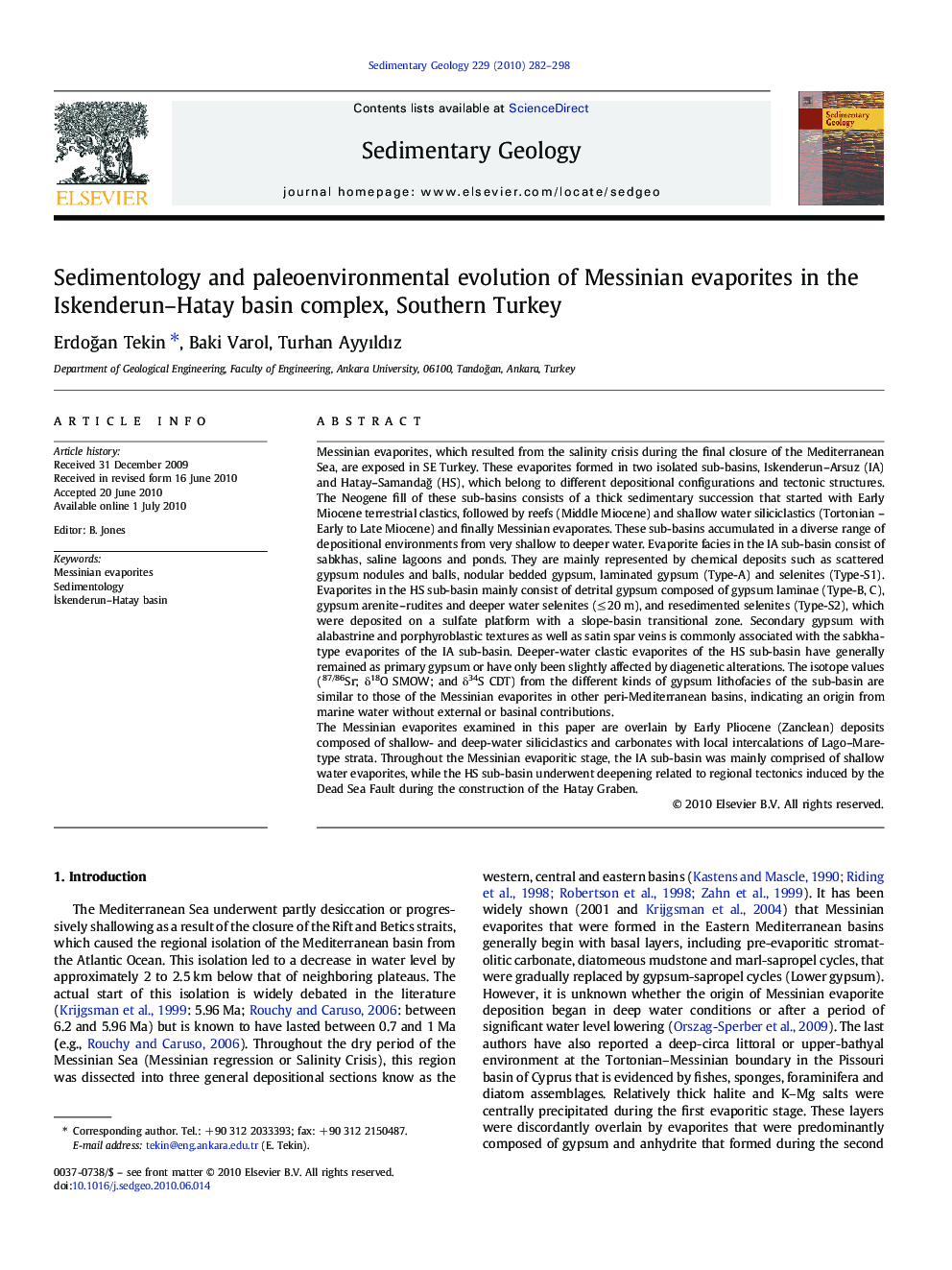| کد مقاله | کد نشریه | سال انتشار | مقاله انگلیسی | نسخه تمام متن |
|---|---|---|---|---|
| 4690158 | 1350093 | 2010 | 17 صفحه PDF | دانلود رایگان |

Messinian evaporites, which resulted from the salinity crisis during the final closure of the Mediterranean Sea, are exposed in SE Turkey. These evaporites formed in two isolated sub-basins, Iskenderun–Arsuz (IA) and Hatay–Samandağ (HS), which belong to different depositional configurations and tectonic structures. The Neogene fill of these sub-basins consists of a thick sedimentary succession that started with Early Miocene terrestrial clastics, followed by reefs (Middle Miocene) and shallow water siliciclastics (Tortonian – Early to Late Miocene) and finally Messinian evaporates. These sub-basins accumulated in a diverse range of depositional environments from very shallow to deeper water. Evaporite facies in the IA sub-basin consist of sabkhas, saline lagoons and ponds. They are mainly represented by chemical deposits such as scattered gypsum nodules and balls, nodular bedded gypsum, laminated gypsum (Type-A) and selenites (Type-S1). Evaporites in the HS sub-basin mainly consist of detrital gypsum composed of gypsum laminae (Type-B, C), gypsum arenite–rudites and deeper water selenites (≤ 20 m), and resedimented selenites (Type-S2), which were deposited on a sulfate platform with a slope-basin transitional zone. Secondary gypsum with alabastrine and porphyroblastic textures as well as satin spar veins is commonly associated with the sabkha-type evaporites of the IA sub-basin. Deeper-water clastic evaporites of the HS sub-basin have generally remained as primary gypsum or have only been slightly affected by diagenetic alterations. The isotope values (87/86Sr; δ18O SMOW; and δ34S CDT) from the different kinds of gypsum lithofacies of the sub-basin are similar to those of the Messinian evaporites in other peri-Mediterranean basins, indicating an origin from marine water without external or basinal contributions.The Messinian evaporites examined in this paper are overlain by Early Pliocene (Zanclean) deposits composed of shallow- and deep-water siliciclastics and carbonates with local intercalations of Lago–Mare-type strata. Throughout the Messinian evaporitic stage, the IA sub-basin was mainly comprised of shallow water evaporites, while the HS sub-basin underwent deepening related to regional tectonics induced by the Dead Sea Fault during the construction of the Hatay Graben.
Journal: Sedimentary Geology - Volume 229, Issue 4, 15 August 2010, Pages 282–298